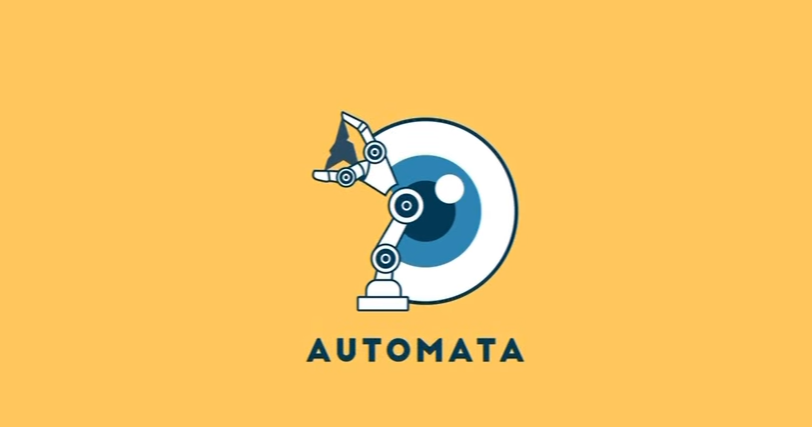On both sides of the Atlantic, the discipline of Archaeology has been a relative early adopter of ICT in teaching and research, particularly when compared with other arts and humanities. Archaeologists routinely create vast quantities of primary digital data, in a rich variety of formats, including structured and unstructured text, spreadsheets and databases, still and moving images, CAD, GIS, landscape and object-scale 3-D scans, and virtual reality models. Although digitisation is important for legacy data sets, much of this primary data is already born digital. As the only record of unrepeatable fieldwork it is essential that these data are preserved, for re-use and re-interpretation. In the UK the Archaeology Data Service (ADS) has developed into a national repository for digital data from the UK historic environment sector, cross-cutting the academic and public and private sectors. In the USA, it has taken longer to establish a national archival infrastructure but in December 2008 the Digital Antiquity initiative and its digital repository, the Digital Archaeological record (tDAR), was established at Arizona State University, with generous funding from the Andrew W Mellon Foundation. Digital Antiquity’s scope also includes archaeology in the private, governmental, and academic sectors (http://tdar.org/).
The primary aim of the Transatlantic Archaeology Gateway (TAG) project has been to develop tools for transatlantic cross-searching and semantic interoperability between ADS and tDAR. This will provide a sustainable service for archaeological teaching, learning and research across two continents; it also provides an exemplar for international cyber-infrastructure partnerships between North America and Europe, across all subject areas.
Read the Final Project Report (PDF)
Funded jointly by JISC and the NEH, TAG has developed interoperability between the USA and UK at two levels. The first stage has been to create an infrastructure to enable basic cross-search of Dublin Core compatible metadata records for digital resources covering the archaeology of the USA and UK. This has built on earlier work on the EU-funded ARENA project which demonstrated such an approach achievable within Europe. Nonetheless, mapping European to North American metadata schemes offered some real challenges, particularly with regard to periodisation and subject type. The second stage of TAG is attempt to develop a much deeper and richer level of cross-searching for faunal data from North America and Europe. This sub-discipline has been chosen as there is a relatively high level of agreement over basic classifications; the provision of deep data mining will be truly ground-breaking.
Partners
The Transatlantic Archaeology Gateway (TAG) project is a collaboration between the Archaeology Data Service, University of York and Digital Antiquity, Arizona State University.
The following people were involved in the project:
Archaeology Data Service
- Julian Richards – ADS Director:jdr1@york.ac.uk
- Stuart Jeffrey – TAG Project Manager for the ADS:sj523@york.ac.uk
- Catherine Hardman – ADS Collections Development Manager:csh3@york.ac.uk
Digital Antiquity
- Keith W. Kintigh – Digital Antiquity PI/Prof. of Anthropology:kintigh@asu.edu
- Katherine A. Spielmann – Prof. of Anthropology (Fauna):kate.spielmann@asu.edu
- Matt Cordial – ASU Libraries Cyberinfrastructure Services (Fedora):matt.cordial@asu.edu
- Mary Whelan – SU Libraries Cyberinfrastructure Services (Geospatial):Mary.Whelan@asu.edu
- Allen Lee – Research Professional/Software:allen.lee@asu.edu
- John Brooks Howard – Head Librarian, University College Dublin:John.B.Howard@ucd.ie
Funding Partners
The following bodies are funding partners in the project::
Presentations
Selected presentations associated with the TAG project are available from this page.
Following the TAG Faunal Remains workshop, the first public presentation mentioning the TAG project took place in a joint Digital Antiquity-ADS session on digital archiving in the CAA2010 ‘Fusion of Cultures’ conference in Granada, Spain, April 6-9th 2010. In December 2010 a presentation on TAG was given at the Theoretical Archaeology Group conference in Bristol, UK.
PowerPoint presentations:
- Prof. Keith Kintigh, Sustaining Database Semantics, CAA 2010, Granada, Spain – PPT (2.0MB)
- Jon Bateman & Stuart Jeffrey,TAG:fishing data from the pond, TAG2010, Bristol, UK – PPT (2.5MB)
Workshop
A key task of the Transatlantic Archaeology Gateway project was an invitational workshop for faunal remains specialists in order to present to them a proposed joint US-UK faunal remains description schema that will allow the cross-searching of faunal remains databases held on either side of the Atlantic. The objective of the workshop was to both garner feedback on the proposed schema and to build a consensus amongst the specialist community that this approach offers potential for the enhanced discovery analysis of faunal remains records.
In the UK the workshop was coordinated by Catherine Hardman with the assistance of the prominent faunal remains specialist Jane Richardson acting as consultant. It was held in the King’s Manor York on the 10th March 2010. The workshop programme, some presentations and list of participants are be available below.
Documents
| Workshop Programme | 0.2 MB | |
|---|---|---|
| Workshop Participants | 0.1 MB |
Presentations
| Workshop Introduction, Prof. Julian Richards | PPT | 0.25 MB |
|---|---|---|
| Service Oriented Architecture and TAG, Dr Stuart Jeffrey | PPT | 11.3 MB |
TAG Faunal Remains Cross-Search Schema
Draft TAG Faunal Remains Cross-Search Schema – XLS (0.1MB)
TAG Gateway Service Specifications
This page describes the various schema that were used in the Transatlantic Archaeology Gateway Service. Please note that the schema found on this page are prototypes and not intended for immediate use, temporary and experimental service development can take place using this service specification. Please contact the ADS for the most up to date specification.
Download all files in single ZIP
TAG Service WSDL
A WSDL (Web Services Description Language) document is an XML document describing a Web Service – the location of the service and the operations (or methods) the service exposes. The following WSDL document thus describes the Gateway Service, and can be used as a basis for creating complinat services:
TAG_service.wsdl (No longer available)
TAG Service Schema
The Transatlantic Archaeology Gateway Service Schema is referenced by the Transatlantic Archaeology Gateway Service WSDL document, defining the specific methods an Transatlantic Archaeology Gateway Service can implement:
TAG_schema.xsd (No longer available)
TAG Service Data Model
While the TAG Service Schema defines the methods an TAG Service should implement, it also references the following schema which essentially define the data model used in an TAG Service implementation:
(No longer available)
TAG_metadata.xsd
TAG_query.xsd
TAG_results.xsd
Midas-Heirnet XML?
It was necessary to make some adjustments to the current MidasXML schema to give some of the core Midas elements greater flexibility. The Transatlantic Archaeology Gateway Service thus makes use of this modified ‘Midas-Heirnet XML’ for data exchange. Although the changes were indeed minor, and in most cases consumers of existing MidasXML should still be able to use Midas-Heirnet data, the creation of this modified MidasXML schema was done to avoid any confusion with the existing standard.
- midas_monument.xsd
- midas_event.xsd
- midas_reference.xsd
- midas_object.xsd
- midas_common.xsd
- midas_meta.xsd
- midas_temporal.xsd
- midas_spatial.xsd
- midas_craft.xsd
- midas_casework.xsd
- midas_artefact.xsd
- midas_actor.xsd
Differences between MidasXML 1.0 and Midas-Heirnet:
- all schema: 28-04-2009 SJW changed namespace to: http://www.heritage-standards.org.uk/midas/schema/heirnet
- midas_monument: 28-04-2009 SJW defined ‘monument’ as discreet complex element to allow reference from external schema.
- midas_event: 28-04-2009 SJW defined ‘event’ as discreet complex element to allow reference from external schema.
- midas_reference: 28-04-2009 SJW defined ‘reference’ as discreet complex element to allow reference from external schema.
- midas_object: 28-04-2009 SJW defined ‘object’ as discreet complex element to allow reference from external schema.
TAG Service tModel
A tModel is a data structure representing a type of service in the UDDI (Universal Description, Discovery, and Integration) enabled Heirnet Register. The tModel is an abstraction for a technical specification of a service type, organizing the service type’s information and making it accessible in the registry database.
The TAG Service tModel describes a Transatlantic Archaeology Gateway Service by including a pointer to the Transatlantic Archaeology Gateway Service WSDL document. In this way the Heirnet Registry can process a client query to return a list of available services complete with the necessary information to enable a client application to bind to.
The TAG Service tModel is defined as follows:
-
- From inspection of the TAG Service tModel, one can see the unique tModelKey:
uuid:26D68320-4099-11DE-BA10-CCF8371EB21E
- The overviewDoc element contains the pointer to the TAG Service WSDL document as the value of its overviewURL element.
- Further, the tModel is assigned a category of wsdlSpec, meaning that a service implementing this model must be a WSDL based web service.





